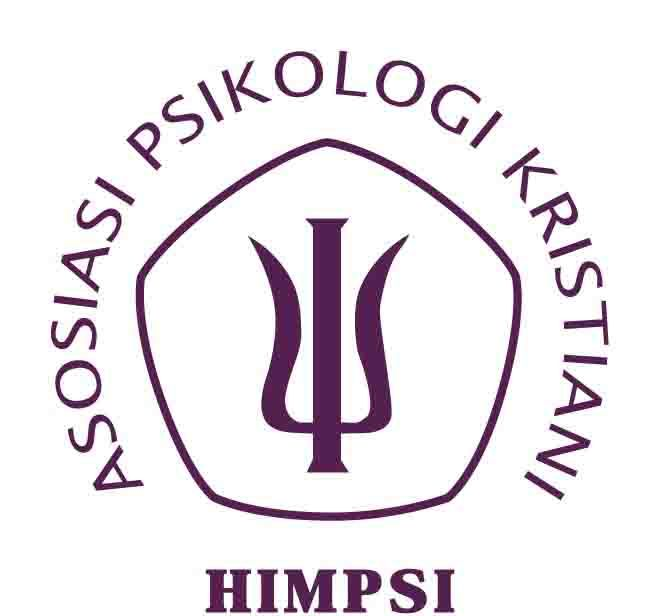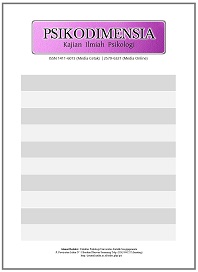Development and Validation of Psychological Fitness to Drive Scale for Filipinos
Abstract
Abstract
Road transportation for Filipinos is a daily task that subjects an individual to risks and dangers, leading to damages and deaths annually, this leads to developing and validating a Psychological Fitness to Drive Scale for Filipinos (PFDSF) to assess Filipino drivers’ mental readiness and save lives. Via test development, 154 items were generated after a rigorous process of conceptualization and item generation from pre-survey, interviews, and related literature with English and Filipino test booklets as delivered to 102 participants for pilot testing. Online field testing was delivered due to the COVID-19 pandemic. About 463 samples went through a series of factor analyses to determine the existing factors and retain highly relevant items, resulting in two factors namely, Risky Driving Behavior (RDB) with 50 items (α=0.968), and Responsible and Safe Mobility (RSM) having 22 items (α=0.915), for a total of 72 items. PFDSF was found to be psychometrically sound with validity in its content, construct, factors, and high reliability (α=0.967). Future researchers are invited to use the scale and explore other areas for utility with specific population, age, gender, exploration of a social desirability factor, further strengthening of its criterion, convergent and divergent validity considering computer-assisted online version its localization to different major dialects.
Keywords: Psychological fitness to drive, test development and validation, Filipino drivers, road safety and traffic psychology
Keywords
Full Text:
PDF (ENGLISH)References
Aldao, A. (2014, August 29). Emotion Regulation: What Is It and Why Does It Matter? Retrieved www.psychologytoday.com/us/blog/sweet-emotion/201408/emotion-regulation-what-is-it-and- why-does-it-matter
Arceo, N. R., Ejada, J. T., Osorno, L. I., Tangarorang, J. S., & Patlunag, J. S. (2019). Traffic Education Awareness among Tricycle Drivers in Buenavista, Agusan del Norte, Philippines. SMCC Criminal Justice Journal, 2, 11-18.
Bushman, B. J., Steffgen, G., Kerwin, T., Whitlock, T., & Weisenberger, J. M. (2018, January). "Don't you know I own the road?" The link between narcissism and aggressive driving. Transportation Research Part F: Traffic Psychology and Behaviour, 52, 14-20. doi:https://doi.org/10.1016/j.trf.2017.10.008
Cayabyab, M. (2020, February 21). C-5 Metro Manila’s deadliest road – MMDA. Retrieved from philstar.com: https://www.philstar.com/ nation/2020/02/21/1994847/c-5-metro-manilas-deadliest-road-mmda
Cohen, R., & Swerdlik, M. E. (2018). Psychological Testing and Assessment. McGraw-Hill Education. Cordazzo, S. T., Scialfa, C. T., Bubric, K., & Ross,
R. J. (2014). The Driver Behaviour Questionnaire: A North American analysis. Journal of Safety Research, 99-107. doi:10.1016/j.jsr.2014.05.002
da Silva, F. P., Santos, J. A., & Meireles, A. (2014). Road Accident: Driver Behaviour, Learning and Driving Task. Procedia - Social and Behavioral Sciences, 162, 300-309. doi: 10. 1016/j.sbspro.2014.12.211
de Winter, J. C., & Dodou, D. (2010). The Driver Behaviour Questionnaire as a predictor of accidents: A meta-analysis. Journal of Safety Research, 463-470.
Dombrowski, S. (2017, August 10). Re: Low communality value of a variable? Retrieved from https://www.researchgate.net/post/Low- communality-value-of-a-variable/598c5ba26 15e274d3e0bc55c/citation/download.
Elfering, A., Ruppen, V., & Grebner, S. (2013). Learning to Drive: Learners’ Self-Reported Cognitive Failure Level predicts driving instructors' observation rating of driving performance. International Journal of Occupational Safety and Ergonomics, 19(3), 485-491.
Engellant, K. A., Holland, D. D., & Piper, R. T. (2016). Assessing convergent and discriminant validity of the motivation construct for the technology integration education (TIE) model. Journal of Higher Education Theory and Practice, 16(1), 37-50.
Finch, W. (2019). Using Fit Statistic Differences to Determine the Optimal Number of Factors to Retain in an Exploratory Factor Analysis. Educational and Psychological Measurement, 217-241.doi:https://doi.org/10.1177/001316 4419 865769
Francisco, K. (2017, May 8). The 5 pillars behind the Philippines' road safety action plan. Retrieved from rappler.com: https://www. rappler.com/move-ph/issues/road-safety/1690 02-philippine-road-safety-action-plan-pillars
Frederick, R. I., & Speed, F. M. (2007). On the interpretation of below-chance responses in forced-choice tests. Assessment, 14(1), 3-11.
Frey, B. B. (2018). The SAGE Encyclopedia of Educational Research, Measurement, and Evaluation. SAGE. doi:https://dx.doi.org/ 10.4135/9781506326139.n151
Fuermaier, A. B., Piersma, D., de Waard, D., Davidse, R. J., de Groot, J., Doumen, M. J., Tucha, O. (2017). Assessing fitness to drive: A validation study on patients with mild cognitive impairment. Traffic Injury Prevention, 18(2), 145-149. doi:10.1080/15 389588.2016.1232809
Grecia, L. (2020, July 1). Driver’s license applications require course completion certificates starting August 3. Retrieved from topgear.com.ph: https://www.topgear.com.ph/ news/motoring-news/lto-driving-course-cert ificates-a4354-20200701
Hadi, N., Abdullah, N., & Sentosa, I. (2016, January). An easy approach to exploratory factor analysis: A marketing perspective. Journal of Educational and Social Research, 6(1), 215-223. doi:10.5901/jesr.2016.v6n1p215
Howard, M. T. (2016, January 8). A Review of Exploratory Factor Analysis Decisions and Overview of Current Practices: What We are doing and How Can We Improve? International Journal of Human-Computer Interaction, 32(1), 51-62. doi:10.1080/ 10447318.2015.1087664
International Transport Forum. (2017). Executive Summary. OECD Publishing.
Ivers, R., Senserrick, T., Boufous, S., Stevenson, M., Chen, H.-Y., Woodward, M., &
Norton, R. (2009). Novice Drivers' Risky Driving Behavior, Risk Perception, and Crash Risk: Findings from the DRIVE Study. American Journal of Public Health, 99(9), 1638–1644. doi:10.2105/AJPH.2008.150367
Kaplan, R. M., & Saccuzzo, D. P. (2016). Psychological Assessment and Theory: Creating and Using Psychological Tests. Singapore: Cengage Learning.
Kazemi, R., Karimpour, S., Shahriyari, M., & Hossaini, S. (2017, October). A survey of the relationship between the mental workload and cognitive failure in taxi drivers. Journal of Health Sciences & Surveillance System, 5(4), 188-192.
Land Transportation Office. (2020, January 27). Annual Report 2019. Retrieved from lto.gov.ph:https://www.lto.gov.ph/transparency-seal/annual-reports/file/908-annual-report- 2019.html
Lavrakas, P. J. (2008). Encyclopedia of Survey Research Methods. doi:http://dx.doi.org/10. 4135/ 9781412963947.n537
LTO. (2016). Citizen's Charter.
Martunissen, L. M., Hakamies-Blomqvist, L., Møller, M., Özkan, T., & Lajunen, T. (2013). Age, gender, mileage, and the DBQ: The validity of the Driver Behavior Questionnaire in different driver groups. Accident Analysis & Prevention, 228-236. doi:10.1016/j.aap.2012. 12.036
Mekonnen, T. H., Tesfaye, Y. A., Moges, M. G., & Gebremedin, R. B. (2019). Factors associated with risky driving behaviors for road traffic crashes among professional car drivers in Bahirdar city, northwest Ethiopia, 2016: a cross-sectional study. Environmental Health and Preventive Medicine, 24(17). doi: https://doi.org/10.1186/s12199-019-0772-1
Mikler, S. R., & Almakadma, A. (2016). Attitudes and behaviors towards risky driving among adolescents in Saudi Arabia. International Journal of Pediatrics and Adolescent Medicine, 3(2), 55-63. doi:https://doi.org/ 10.1016/j.ijpam.2016.03.003
National Institute on Drug Abuse. (2017). National Institutes for Health. Retrieved from https://www.drugabuse.gov/
Official Gazette. (2016). Official Gazette. Retrieved from https://www.officialgazette.gov.ph/.
Osborne, J. W. (2014). Best Practices in Exploratory Factor Analysis. Scotts Valley, CA: Create Space Independent Publishing.
Palubiski, L., & Crizzle, A. M. (2016). Evidence- Based Review of Fitness-to-Drive and Return- to-Driving Following Traumatic Brain Injury. Geriatrics, 1(17). doi:10.3390/ geriatrics1030017
Philippine Statistics Authority. (2018, March). NCR Gender Factsheet. Retrieved from rssoncr. psa. gov.ph: http://rssoncr.psa.gov. ph/sites/default/files/2018%20gender%20factsheet_0.pdf
Pinggolio, J. V. (2015). Development and Validation of Quarterlife Crisis Scale for Filipinos.
Porter, B. E. (2011). Handbook of Traffic Psychology. USA: Academic Press.
Ranchet, M., Tant, M., Akinwuntan, A. E., Morgan, J. C., & Devos, H. (2016). Fitness-to-drive Disagreements in Individuals with Dementia. The Gerontologist, 57(5), 833-837. doi:10. 1093/grant/gnw119
Reason, J., Manstead, A. S., Stradling, S., Baxter, J., & Campbell, K. (2011). Errors and Violations on the Roads: a Real Distinction? Ergonomics, 33(10), 1315-1332. doi:10.1080/00140139008925335
Reimann, C., Schubert, W., Berg, M., & van der Meer, E. (2014). Indication for the Assessment of Driver Fitness after Problematic Alcohol Consumption. Journal of Addiction Research and Practice, 60(3), 139-147. doi:10.1024/ 0939-5911.a000309
Rey, A. (2018, April 11). IN CHARTS: How deadly are Metro Manila roads? Retrieved from rappler.com: https://www.rappler.com/news break/in-depth/199896-metro-manila-road-crash-2017
Rey, A. (2018, April 14). PH having 'hard time' curbing road crash deaths – lawmaker. Retrieved from rappler.com: www.rappler.com/ nation/200170-ph-difficulty-road-crash-deaths- cesar-sarmiento
Ros-Gálvez, A. (2017, May 1). Re: How to deal with cross loadings in Exploratory Factor Analysis?. Retrieved from https://www. researchgate.net/post/How-to-deal-with-cross-loadings-in-Exploratory-Factor-Analysis/5907 3c6c217e20 36821680eb/citation/download
Sagar, R., Mehta, M., & Chugh, G. (2013). Road rage: An exploratory study on aggressive driving experience on Indian roads. International Journal of Social Psychiatry.
Samuels, P. (2017). Advice on Exploratory Factor Analysis.
Schuhfried. (2015). The legal framework for assessing fitness to drive in selected European countries. www.schuhfried.at. Retrieved November 23, 2017,from http://traffic- psychology-international.eu/wp-content/ uploads/2013/12/Legal-framework-for- assessing-fitness-to-drive_10.2010_en.pdf
Schwarz, J., Geisler, P., Hajak, G., & Zulley, J. (2015). The effect of partial sleep deprivation on computer-based measures of fitness to drive. Sleep And Breathing, 20(1). doi:10.1007/ s11325- 015-1220-0
Seva, R. R. (2017). Modeling Motorcycle Accident Severity in the Philippines using Helmet Use, Riding Experience, and Driving Behaviour. International Journal for Traffic & Transport Engineering, 7(3), 342-353. doi:http://dx.doi. org/10.7708/ijtte. 2013.3(2).06
Shaaban, K., Gaweesh, S., & Ahmed, M. (2020). Investigating in-vehicle distracting activities and crash risks for young drivers using structural equation modeling. PLOS ONE, 15(7). https://doi.org/10.1371/journal.pone. 023 5325
Shinar, D., & Oppenheim, I. (2011). Review of Models of Driver Behaviour and Development of a Unified Driver Behaviour Model for Driving in Safety Critical Situations. Human Modelling in Assisted Transportation: Models, Tools and Risk Methods, 215-223. doi:10.1007/ 978-88-470-1821-1_23
Şimşekoğlu, Ö., Nordfjærn, T., & Rundmo, T. (2012, August). Traffic risk perception, road safety attitudes, and behaviors. Journal of Risk Research, 15(7), 787-800. https: //doi.org/ 10.1080/13669877.2012.657221
Singh, K. e. (2016). Norms for Test Construction. Measures of Positive Psychology, 17-34. doi:10.1007/978-81-322-3631-3_2
Šucha, M. (n.d.). Fitness to drive. Retrieved November 18, 2017, from http://psych.upol. cz/wp-content/uploads/2014/02/Presentation4_ fitnes_to_drive.pdf
Šucha, M., & Černochová, D. (2016). Driver Personality as a Valid Predictor of Risky Driving. Transportation Research Procedia, 14, 4286 - 4295. https://doi.org/10.1016/j. trpro. 2016.05.400
Sucha, M., Sramkova, L., & Risser, R. (2014). The Manchester driver behaviour questionnaire: self-reports of aberrant behaviour among Czech drivers. European Transport Research Review, 6(4), 493 - 502. doi:10.1007/s12544-014-0147-z
Sy, K. (2017, August 10). Human error: Leading cause of road mishaps in Metro Manila. Retrieved from rappler.com: https://www. rappler.com/move- ph/issues/road-safety/ 165556-road-crashes-causes- metro-manila-human-error
Sy, K. (2017, November 02). IN NUMBERS: Road crash incidents in the Philippines. Retrieved from rappler.com: https://www.rappler.com/ move-ph/issues/road-safety/166151-road- crashes-philippines-awareness-safety
Unsworth, C. A., Baker, A. M., So, M. H., Harries, P., & O'Neill, D. (2017). A systematic review of evidence for fitness-to-drive among people with the mental health conditions of schizophrenia, stress/anxiety disorder, depression, personality disorder and obsessive-compulsive disorder. BMC Psychiatry, 17(318). doi:10.1186/s12888- 017-1481-1
Useche, S. A., Cendales, B., Montoro, L., & Esteban, C. (2018). Work stress and health problems of professional drivers: a hazardous formula for their safety outcomes. PeerJ. doi:10.7717/peerj. 6249
Vujanić, M., Antić, B., Pešić, D., & Savićević, M. (2016, October). Testing the psychophysical characteristics of professional drivers – Can we identify unsafe drivers? Transportation Research Part F: Traffic Psychology and Behaviour, 104- 116. doi:https://doi.org/10. 1016/j.trf.2016.07.003
World Health Organization. (2015). Global Status Report on Road Safety. Switzerland: WHO Press.
DOI: https://doi.org/10.24167/psidim.v21i1.4427
Print ISSN : 1411-6073 | online ISSN : 2579-6321 View My Stats

This work is licensed under a Creative Commons Attribution 4.0 International License.





















